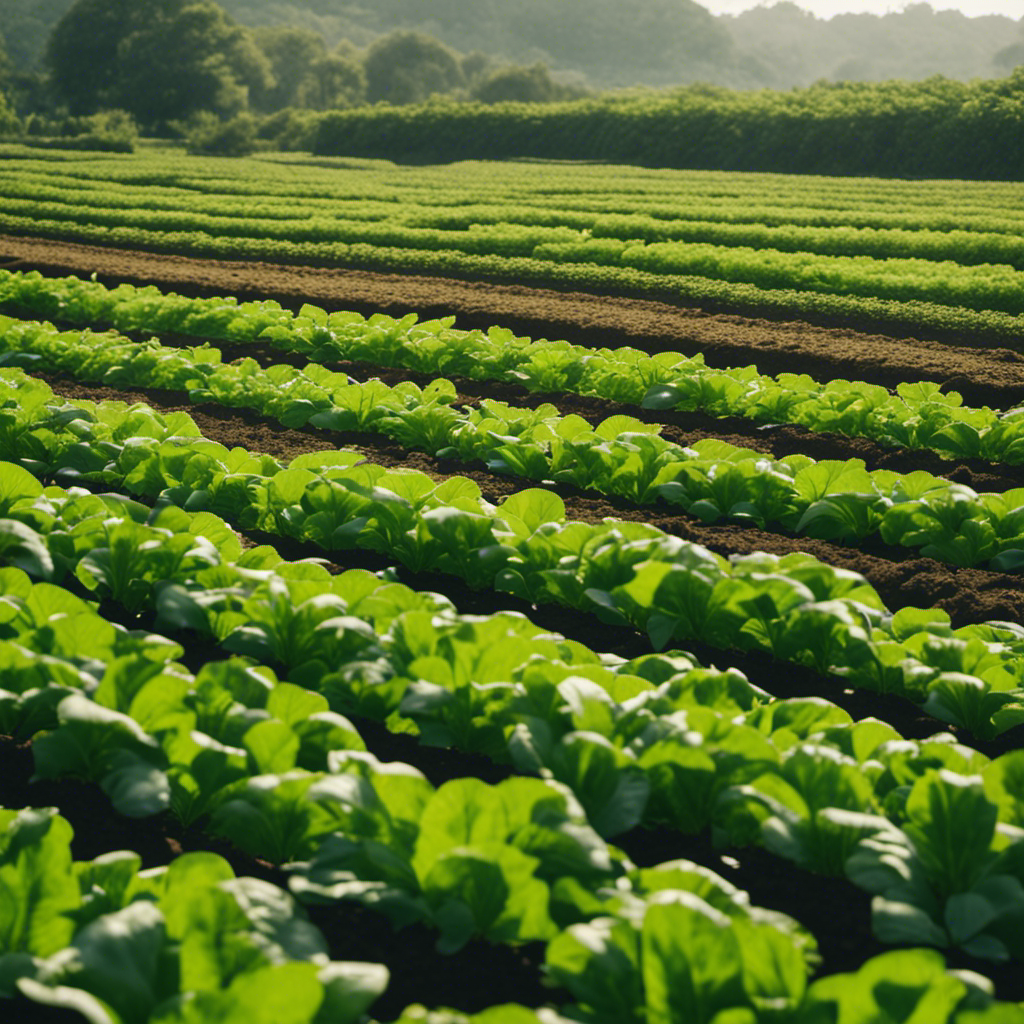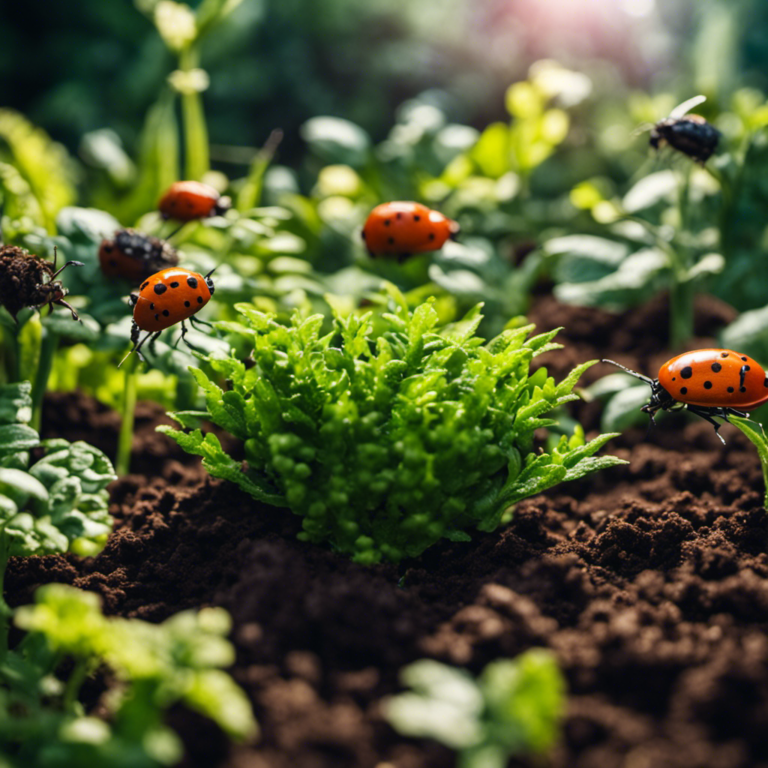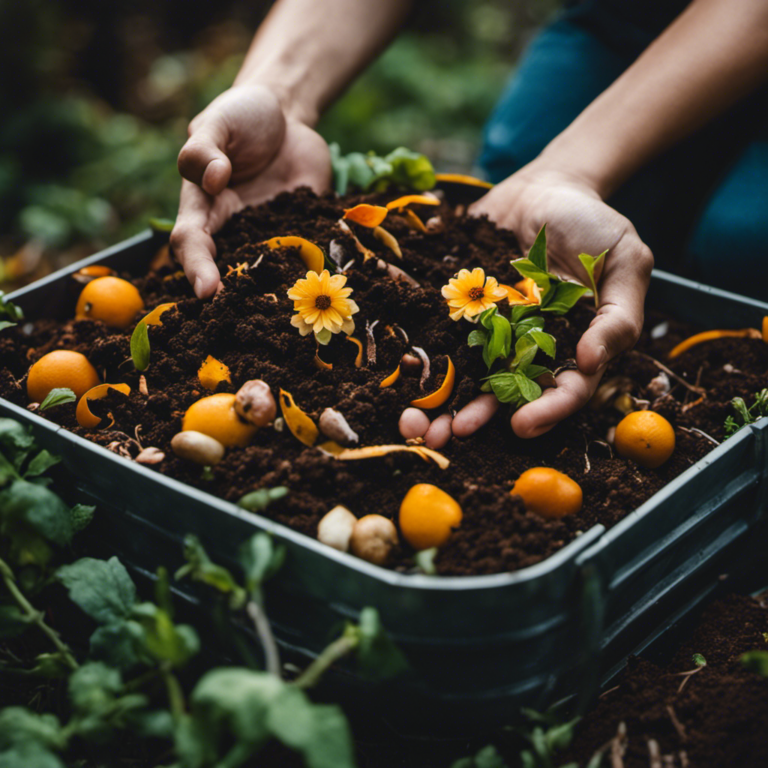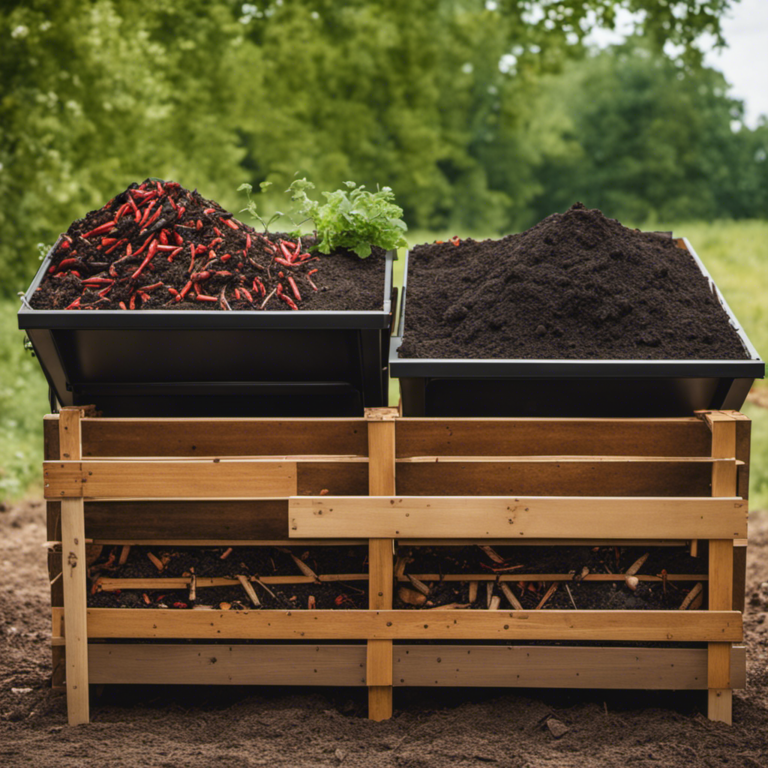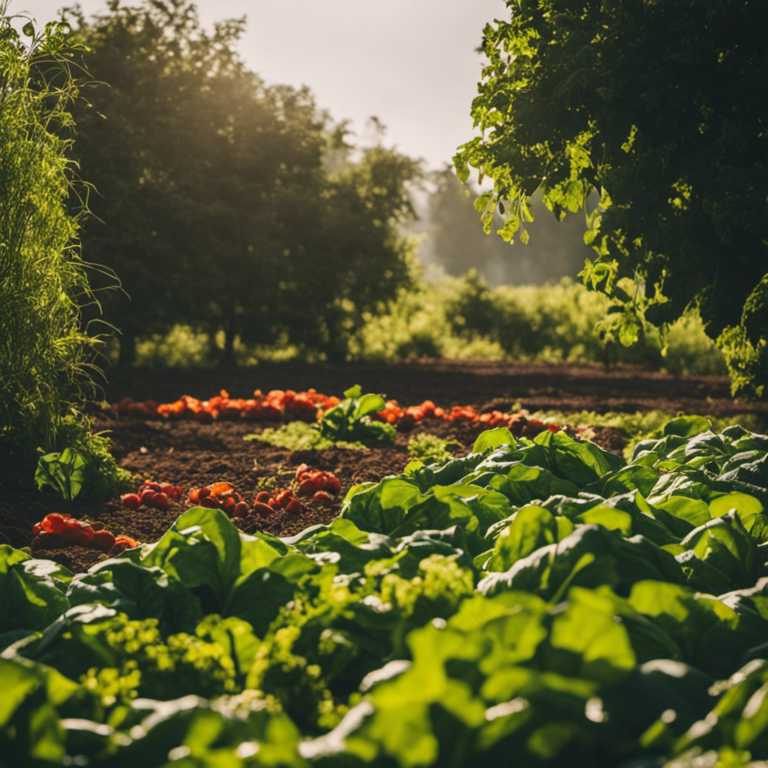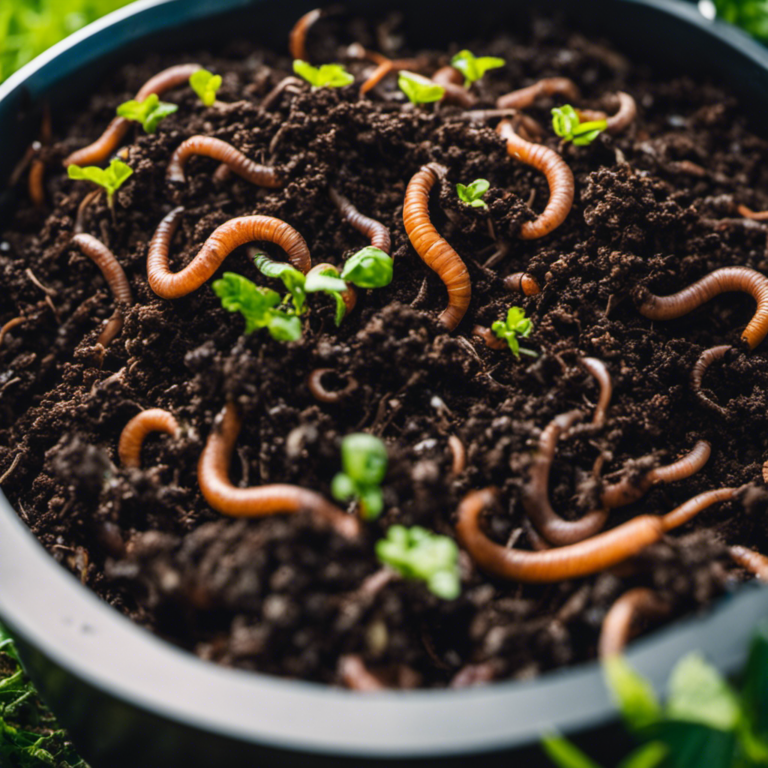As an organic farmer, my constant goal is to find new and effective ways to improve composting techniques. Instead of simply stating the techniques, let’s take a closer look at:
-
Aerobic composting: This method involves using oxygen-loving microorganisms to break down organic waste. It requires proper aeration and turning of the compost pile to maintain the ideal conditions for decomposition.
-
Vermicomposting: In this technique, worms are used to accelerate the decomposition process. Their digestive system helps break down the organic matter and produce nutrient-rich castings, also known as worm castings or vermicompost.
-
Bokashi composting: Originating from Japan, bokashi composting utilizes a mix of beneficial microbes to ferment organic waste. This anaerobic process is ideal for composting kitchen scraps and other organic materials that cannot be easily composted through traditional methods.
-
Hot composting: This technique involves creating a high-temperature compost pile by carefully balancing the carbon-to-nitrogen ratio and maintaining proper moisture levels. The intense heat generated helps kill pathogens and weed seeds, resulting in a quicker breakdown of organic matter.
-
Compost tea production: Compost tea is a liquid fertilizer made by steeping compost in water. It is a concentrated solution of beneficial microorganisms and nutrients that can be applied to plants as a foliar spray or soil drench, promoting healthy growth and suppressing diseases.
These methods hold the key to transforming organic waste into nutrient-rich soil. Join me on this research-driven journey as we explore the world of composting and discover how it benefits the environment and our communities.
Key Takeaways
Exploring Innovative Composting Techniques in Organic Agriculture
The exploration of new composting techniques in organic agriculture has opened up opportunities for sustainable farming practices. By combining different composting methods like aerobic composting, vermicomposting, bokashi composting, hot composting, and compost tea production, farmers can improve soil fertility, enhance plant growth, and reduce the use of chemical inputs.
These techniques work together to break down organic matter, resulting in vibrant and thriving agricultural landscapes. Adopting a research-driven approach to composting is crucial for a greener and healthier future for our planet.
Aerobic Composting
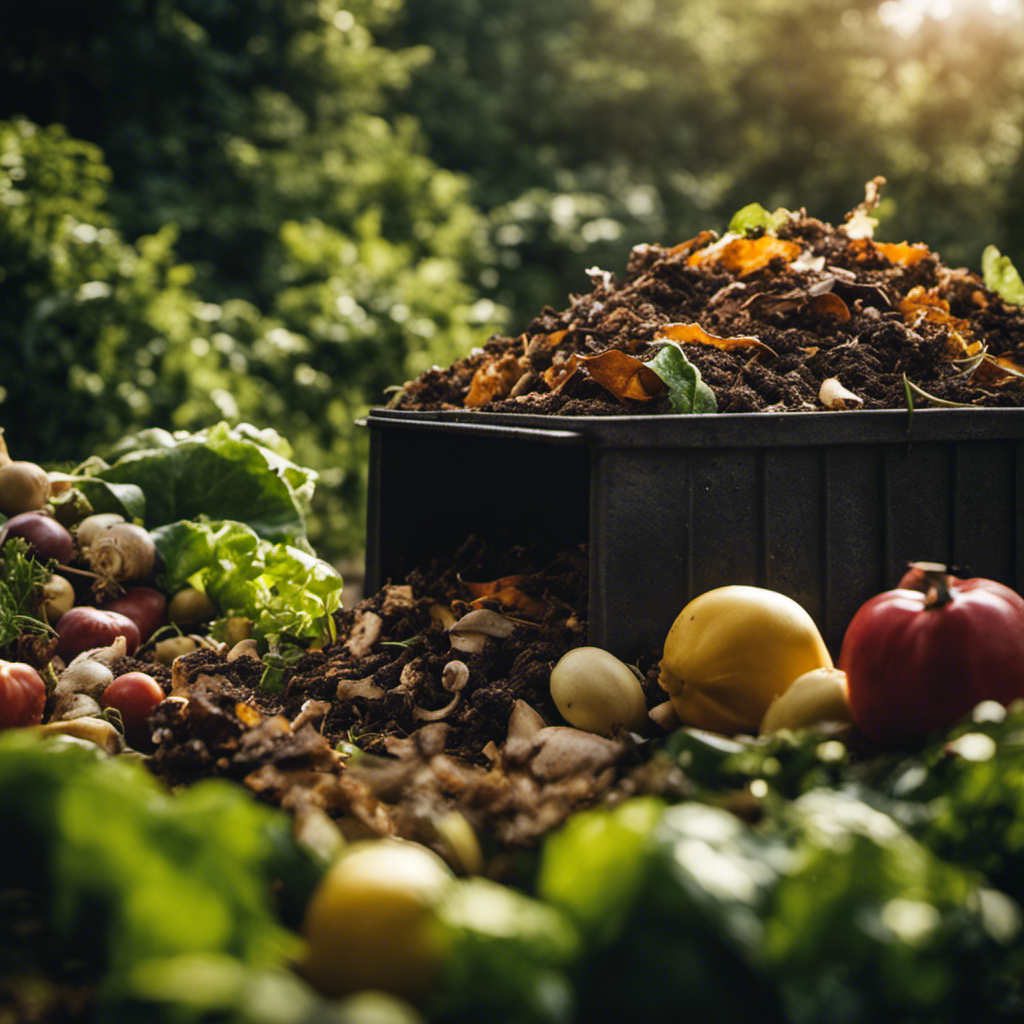
Incorporating aeration into the composting process can greatly improve the breakdown of organic materials. With aerobic composting, microorganisms that thrive in the presence of oxygen, such as bacteria and fungi, play a crucial role in breaking down the organic matter into nutrient-rich compost.
One major advantage of aerobic composting is its ability to accelerate the decomposition of organic materials. The introduction of oxygen speeds up microbial activity, resulting in faster composting times compared to anaerobic methods. This means that organic waste can be converted into valuable compost more quickly, making the composting process more efficient and productive.
To ensure effective aerobic composting, regular maintenance of the compost bin is essential. Proper aeration is crucial to provide oxygen to the microorganisms. This can be achieved by regularly turning or mixing the compost to promote airflow and prevent the formation of anaerobic pockets. Additionally, it’s important to monitor and maintain the moisture levels in the compost. A moist, but not overly wet, environment is ideal for aerobic composting.
Vermicomposting

Vermicomposting is a natural process that utilizes earthworms to break down organic materials into nutrient-rich compost. This method of composting is becoming increasingly popular in organic agriculture because of its numerous benefits. Here are some important points to understand about vermicomposting:
-
Worm farming: Vermicomposting involves creating a suitable environment for worms to thrive and decompose organic waste. The worms consume the organic material and produce nutrient-rich castings, which are valuable for improving soil quality.
-
Soil enrichment: The resulting vermicompost is rich in essential nutrients like nitrogen, phosphorus, and potassium. These nutrients are readily available to plants, promoting soil fertility and supporting healthy plant growth.
-
Increased microbial activity: Earthworms introduce beneficial bacteria and microorganisms into the composting process. These microorganisms aid in the breakdown of organic matter and contribute to the overall health of the soil ecosystem.
-
Sustainable waste management: Vermicomposting offers a sustainable solution for managing organic waste. By diverting organic materials from landfills and converting them into valuable compost, vermicomposting reduces waste and supports a circular economy.
Bokashi Composting

Bokashi composting is an innovative technique in organic agriculture that uses fermentation to break down organic materials into nutrient-rich compost. This process involves the use of specific microorganisms found in bokashi bran, which is a mixture of wheat bran and beneficial bacteria like lactic acid bacteria, yeast, and phototrophic bacteria.
To start the bokashi composting process, organic waste materials like kitchen scraps or garden waste are layered in an airtight container. Each layer is sprinkled with bokashi bran, introducing the beneficial microorganisms to the organic matter. The container is sealed to create an anaerobic environment, allowing the microorganisms to ferment the waste.
During fermentation, the microorganisms in bokashi break down the organic matter through anaerobic respiration. This process produces organic acids, enzymes, and other beneficial by-products that contribute to the breakdown of the organic matter and the creation of nutrient-rich compost.
Bokashi composting offers several advantages in organic agriculture. Unlike traditional composting methods, it can process a wide range of organic materials, including meat, dairy, and citrus scraps. Additionally, bokashi composting is a quick process, with compost ready for use in as little as two weeks. The resulting compost also retains more nutrients compared to other methods, making it valuable for enriching soil fertility and supporting plant growth.
Hot Composting
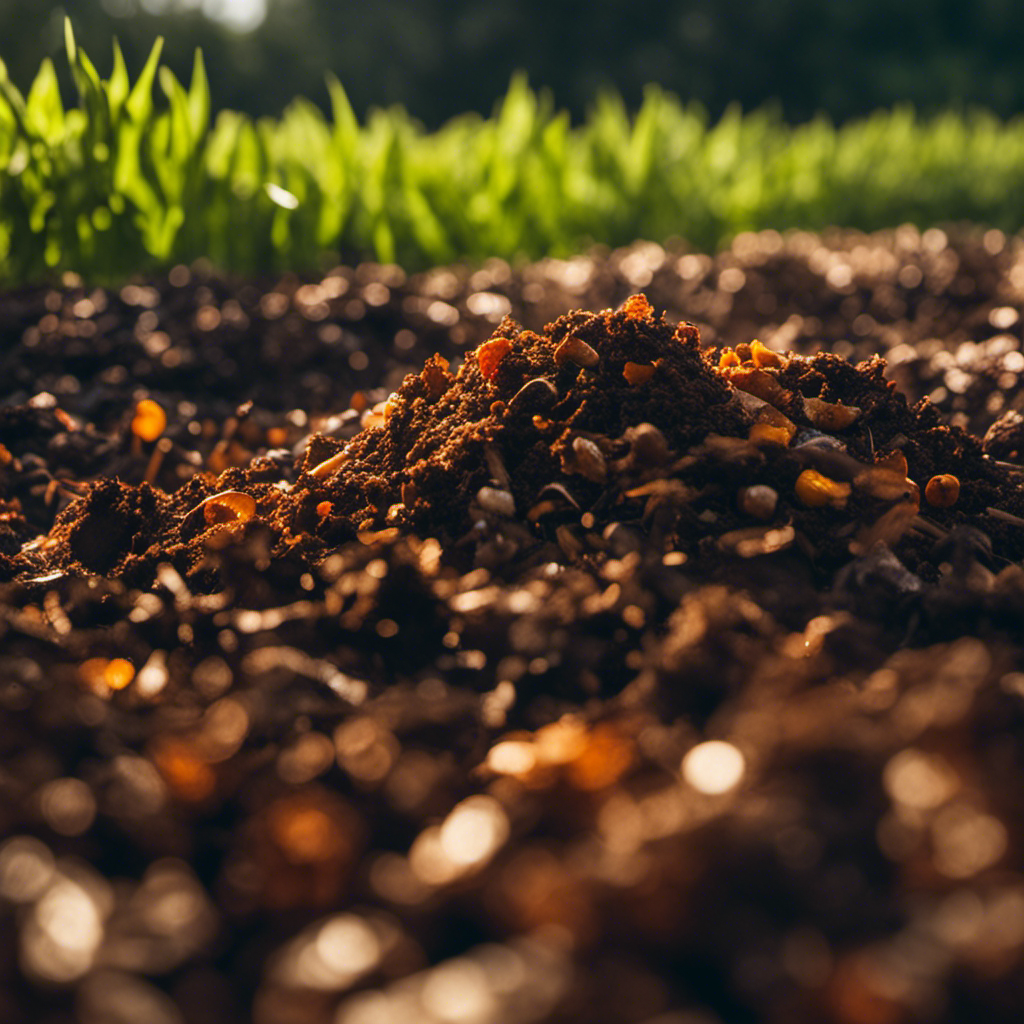
Moving on to the next composting technique, let’s explore hot composting. This method involves creating the ideal conditions for microorganisms to thrive and break down organic matter at a higher temperature. By carefully managing the temperature and optimizing the composting process, we can speed up decomposition and produce high-quality compost more efficiently.
Here are some key aspects of hot composting:
-
Temperature management: Hot composting requires maintaining a temperature range of 130-160°F (54-71°C). This can be achieved by regularly turning the compost pile to ensure proper aeration and heat distribution. Thermophilic bacteria, which thrive in high temperatures, play a crucial role in breaking down the organic material.
-
Composting process optimization: To achieve maximum efficiency, it’s important to balance the carbon-to-nitrogen ratio in the compost pile. A ratio of 25-30 parts carbon to 1 part nitrogen is ideal. This can be accomplished by adding a mix of carbon-rich materials like straw, leaves, and wood chips, along with nitrogen-rich materials such as kitchen scraps and green garden waste.
-
Moisture control: Maintaining the right moisture level is crucial for hot composting. The pile should be kept moist, but not overly wet, to provide a suitable environment for the microorganisms. A moisture level of around 40-60% is recommended.
-
Turning the compost pile: Regularly turning the compost pile helps distribute heat and oxygen evenly throughout the pile, promoting decomposition. Aim to turn the pile every few days or once a week, depending on the temperature and moisture levels.
Compost Tea Production
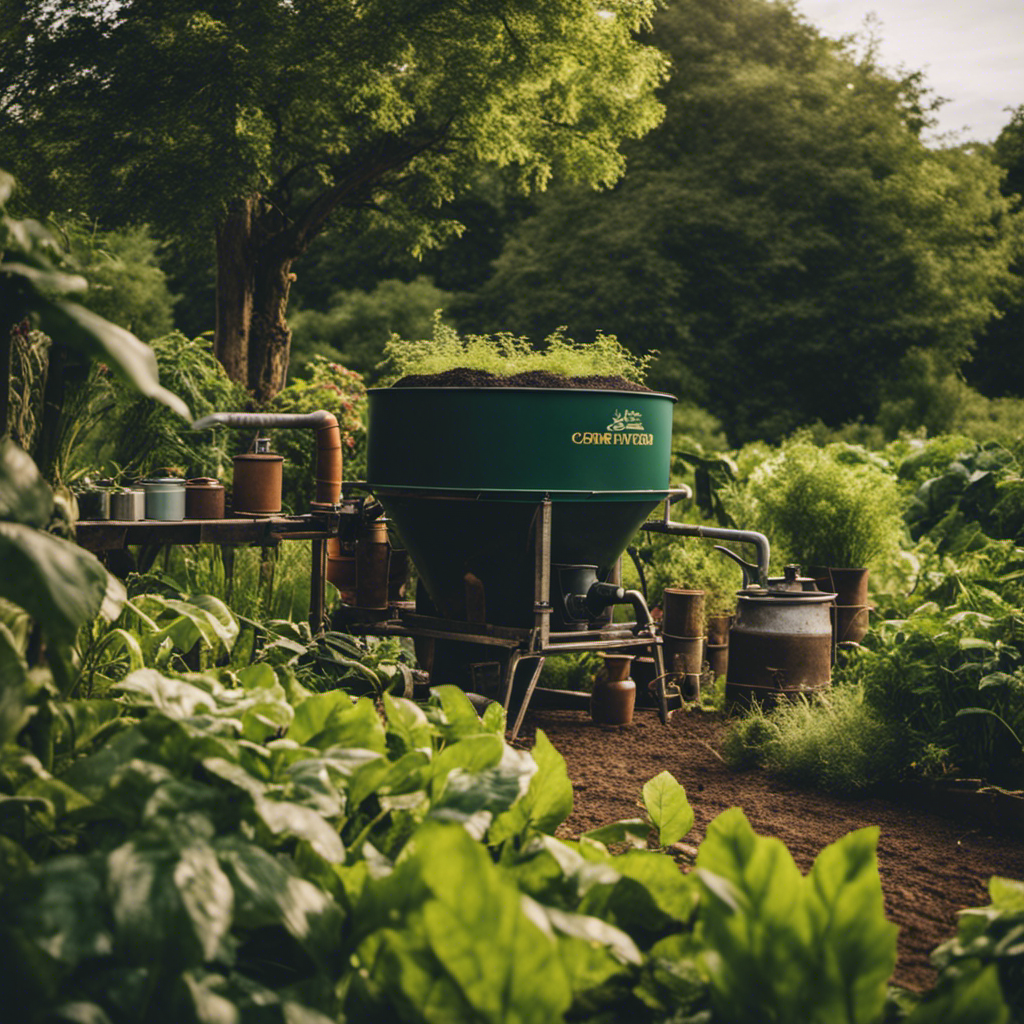
Compost tea production is a technique that involves steeping compost in water to create a liquid fertilizer. This innovative method extracts beneficial microorganisms and nutrients, offering numerous advantages for organic agriculture. It improves soil health, enhances plant growth, and boosts disease resistance.
One of the key benefits of compost tea is its ability to introduce beneficial microorganisms to the soil. These microorganisms, including bacteria, fungi, and protozoa, play a crucial role in breaking down organic matter, releasing essential nutrients, and suppressing harmful pathogens. Additionally, compost tea contains valuable nutrients that can be easily absorbed by plants, promoting their growth and vitality.
When it comes to applying compost tea, there are several methods to consider. Foliar spraying is a common approach where the liquid fertilizer is sprayed directly onto the leaves of plants. This allows for quick absorption of nutrients and microorganisms through the leaf surface.
Another method is soil drenching, which involves applying compost tea directly to the soil around the plant’s root zone. This ensures that the beneficial microorganisms and nutrients reach the plant’s root system, supporting healthy root development.
Conclusion
Exploring Innovative Composting Techniques in Organic Agriculture
The exploration of innovative composting techniques in organic agriculture has opened new doors for sustainable farming practices. By combining various composting methods such as aerobic composting, vermicomposting, bokashi composting, hot composting, and compost tea production, farmers can improve soil fertility, enhance plant growth, and reduce the need for chemical inputs.
These techniques work together to break down organic matter, resulting in vibrant and thriving agricultural landscapes. Adopting a research-driven approach to composting is crucial for a greener and healthier future for our planet.
